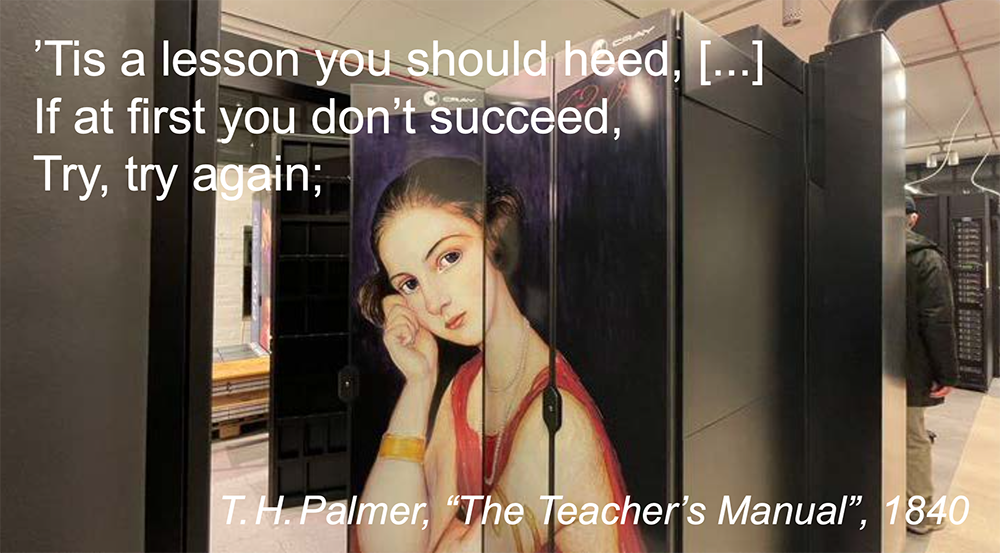Editorial

After an all too long wait, the summer season has suddenly taken us by surprise yet again and filled our landscape with bright colours and sweeping warm winds. No matter the hardships one faces at work, merely travelling back home while the evening skies are blue and full of light fills the spirit with a sensation of optimism, and I dare say that has been needed very much in recent months. There is no denying that the Dardel system has been less than cooperative when undergoing changes and upgrades in the past. After what felt like endless discussions with the vendor, the decision was finally made to change the cluster management software for the system from CSM to HPCM (see “Dardel Status” ). By the time you read this editorial, we will know if our optimistic expectations for a more stable and easily managed system have been realised, as that is certainly what we are aiming for. The number of work hours and amount of stress leading up to this software transformation of Dardel are difficult to put into words, but having watched this from the ringside, I wish to express my deepest gratitude to everyone at PDC who has been involved in implementing this upgrade for their hard work and dedication.
We are looking forward to entering a period of normality in terms of system operation so that overworked staff can recover after we have crossed this bridge to stability. Reaching the other side of this transitional bridge in our operations will allow PDC to concentrate on introducing more science-enabling interfaces, services, and software tools onto Dardel. Of note is the fact that the KTH Royal Institute of Technology (KTH) and PDC are collaborating with the vendor of the overall Dardel system, namely Hewlett Packard Enterprise (HPE), and also with AMD, which produces the processors used in the Dardel system, to enhance the performance of selected scientific applications including GROMACS, VeloxChem and Neko (see “KTH Collaborations with AMD and HPE in the Development of Scientific Applications” ). Our flagship software programs are often highlighted (and rightfully so!) and, in this context, I would like to take the opportunity to mention the rapid development of the VIAMD software for visual analysis of classical – and now also quantum mechanical – simulations of molecular systems (see “VIAMD Update” ).
It is very rewarding to see how the KTH investments in high-performance computing (HPC) software developments are impacting activities elsewhere, and it is with great pleasure I have finished reading the cover article of this newsletter that presents the impressive work of a research group at Lund University. In a short period of time, they have, with the use of the VeloxChem program as a platform, created the MultiPsi program and thereby reached and surpassed the state-of-the-art in electronic structure theory simulations of strongly electron-correlated molecular systems (see “MultiPsi: Quantum Chemistry on HPC for Photochemistry and Inorganic Chemistry” ). Many of you may have heard me say this before, maybe even more than once, but I find this work to be yet another manifestation of the fact that we are now in a position where we can adapt our software according to the needs of our research, rather than having the bounds of our research being delimited by the software that is available on the broader market.
A concrete piece of evidence demonstrating that the KTH investments in HPC are sound is the remarkable success that has been noted for KTH in attracting external funding via a range of EuroHPC Centres of Excellence (CoEs) and other international projects, several of which are addressed in the present newsletter, such as the new EPICURE project (see “EPICURE: High-Level Support for Research with Top-Flight EuroHPC Systems” ), as well as familiar faces like BioExcel (see “BioExcel News” ). The GROMACS and Neko programs are both vehicles for their respective CoEs and PDC is now looking for talented research software engineers to strengthen these two teams. (Information about currently advertised jobs can be found at www.kth.se/lediga-jobb?l=en .) On this optimistic, forward-looking note, I close this editorial and wish you all a wonderful summer.
Patrick Norman, Director PDC
